In a divorce, the laws of equitable distribution distinguish marital property from separate property. Technically, only marital property, that is, proper...
If you’re involved in a car accident in Hawaii that results in any person’s injury or death or causes property damage to an apparent extent of at least $3,000, you are required by law to give immediate notice of the accident to the nearest law enforcement agency. Once police arrive, the investigating officer will secure the crash scene and gather information so that a police accident report can be generated. Officially, this is called the State of Hawaii Motor Vehicle Accident Report, or Form DOT-1-174 (HWY-T).
This formal document contains many essential details about your car accident and can serve as a powerful piece of evidence if you decide to pursue a personal injury claim to recover your losses. Keep in mind that even though Hawaii is a no-fault state for car accidents, you can still step outside the no-fault system if your damages exceed your insurance policy limits or if your injuries are severe enough to meet certain criteria.
Under Hawaii’s modified comparative negligence rules, you will not be able to recover compensation from another party if you’re found to be 51% at fault or higher for your accident. Furthermore, any recovery you do make will be reduced by the percentage of fault you’re assigned. Since the information in your accident report can be used to determine fault, it should be 100% accurate.
After you obtain a copy of your State of Hawaii Motor Vehicle Accident Report, be sure to read it carefully to ensure everything in it is correct. If you notice something in the report is wrong or the investigating officer’s impression of the crash doesn’t reflect the facts of what really happened, contact a Hawaii car accident lawyer near you to protect your rights and learn your legal options.
State of Hawaii Motor Vehicle Accident Report (DOT-1-174 [HWY-T])
https://www.nhtsa.gov/sites/nhtsa.dot.gov/files/documents/mvar_final_combined_pages.pdf
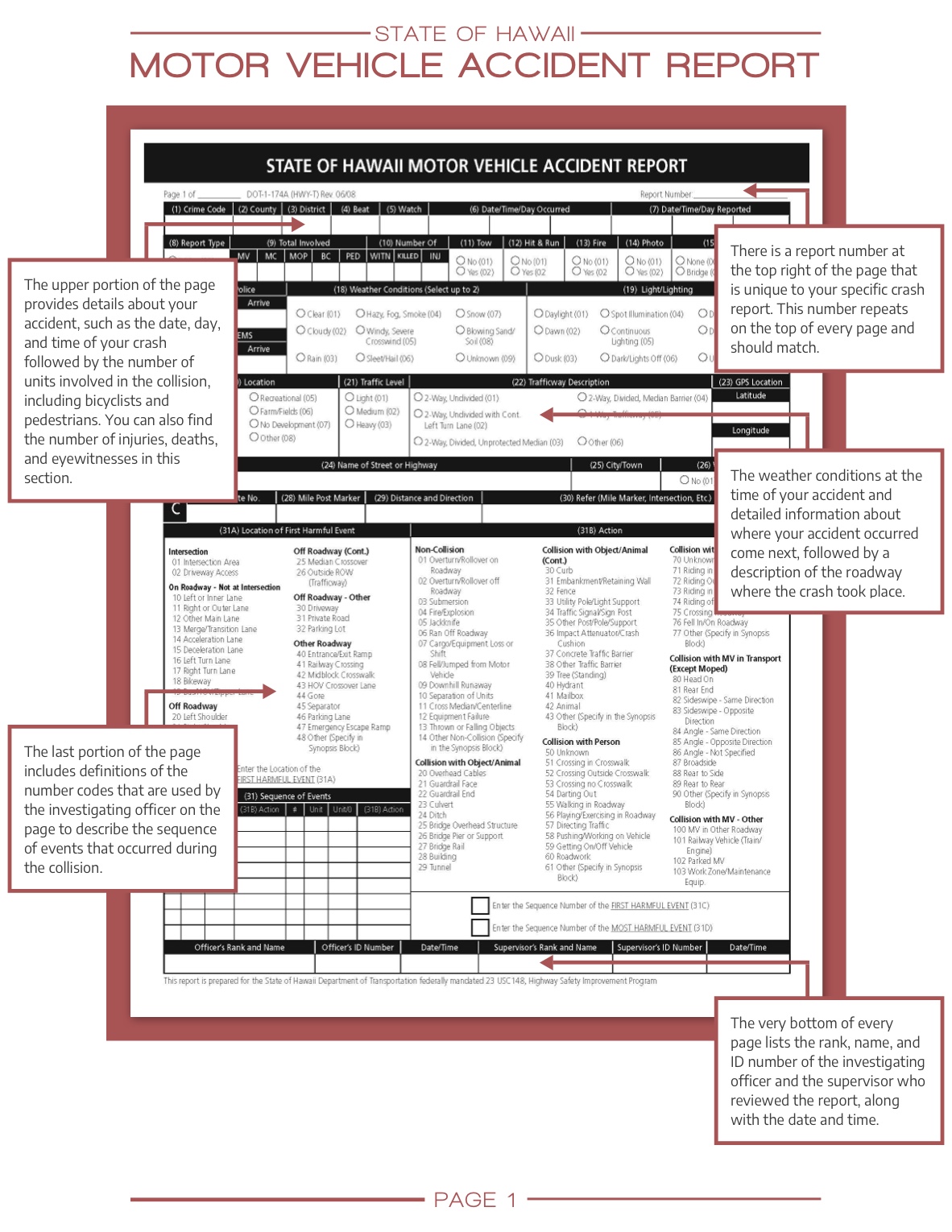
Page 1 (Front Page)
There is a report number at the top right of the page that is unique to your specific crash report. This number repeats on the top of every page and should match.
Click here to download a printable PDF of How to Read Your Hawaii Accident Report.
The upper portion of the page provides details about your accident, such as the date, day, and time of your crash followed by the number of units involved in the collision, including bicyclists and pedestrians. You can also find the number of injuries, deaths, and eyewitnesses in this section.
The weather conditions at the time of your accident and detailed information about where your accident occurred come next, followed by a description of the roadway where the crash took place.
The last portion of the page includes definitions of the number codes that are used by the investigating officer on the page to describe the sequence of events that occurred during the collision.
The very bottom of every page lists the rank, name, and ID number of the investigating officer and the supervisor who reviewed the report, along with the date and time.
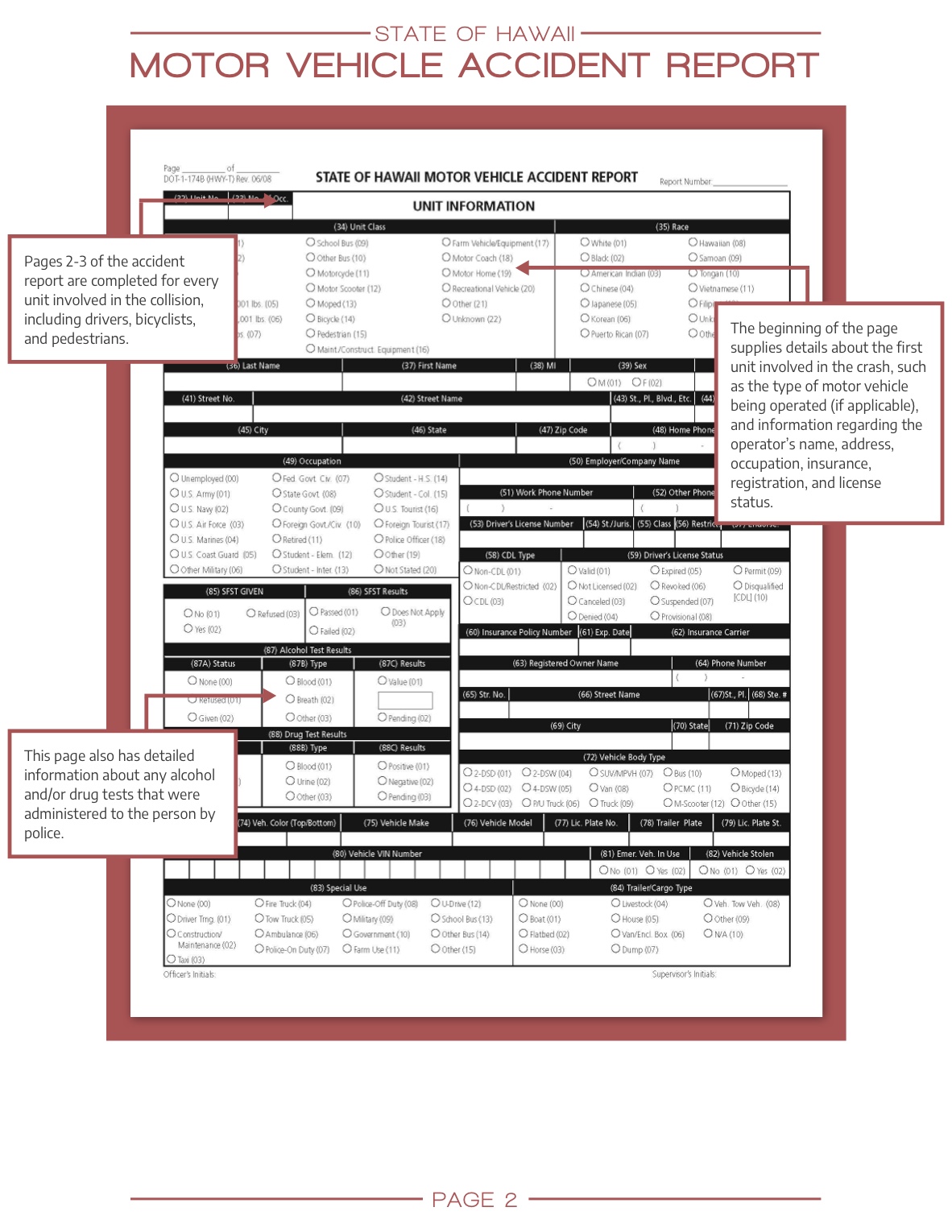
Pages 2-3 of the accident report are completed for every unit involved in the collision, including drivers, bicyclists, and pedestrians.
The beginning of the page supplies details about the first unit involved in the crash, such as the type of motor vehicle being operated (if applicable), and information regarding the operator’s name, address, occupation, insurance, registration, and license status.
This page also has detailed information about any alcohol and/or drug tests that were administered to the person by police.

Page 3 (Unit Information, Continued)
Serving as a continuation of Page 2, this page gives more information about an individual unit involved in the accident.
>Here you can find if any citations were issued to the person by police along with a description of property damage and a diagram to indicate vehicle damage.
Information regarding the person’s actions at the time of the crash comes next, followed by details about any pavement markings or traffic control signals in the area.
The last part of the page describes the unit’s contributing factors to the accident, such as vehicle defects, visual obstructions, and driver negligence/distraction. Roadway conditions are listed last on the page.
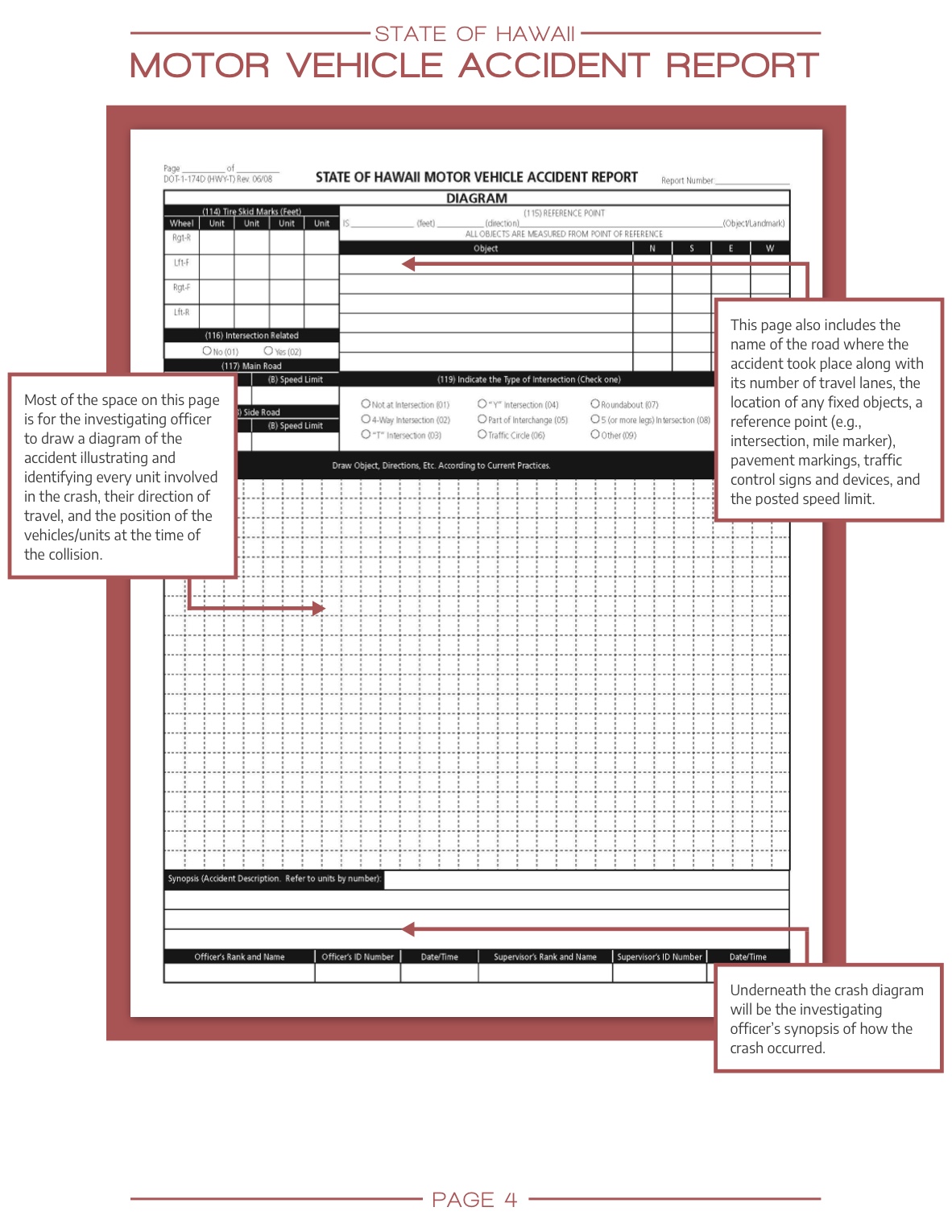
Page 4 (Diagram)
Most of the space on this page is for the investigating officer to draw a diagram of the accident illustrating and identifying every unit involved in the crash, their direction of travel, and the position of the vehicles/units at the time of the collision.
This page also includes the name of the road where the accident took place along with its number of travel lanes, the location of any fixed objects, a reference point (e.g., intersection, mile marker), pavement markings, traffic control signs and devices, and the posted speed limit.
Underneath the crash diagram will be the investigating officer’s synopsis of how the crash occurred.
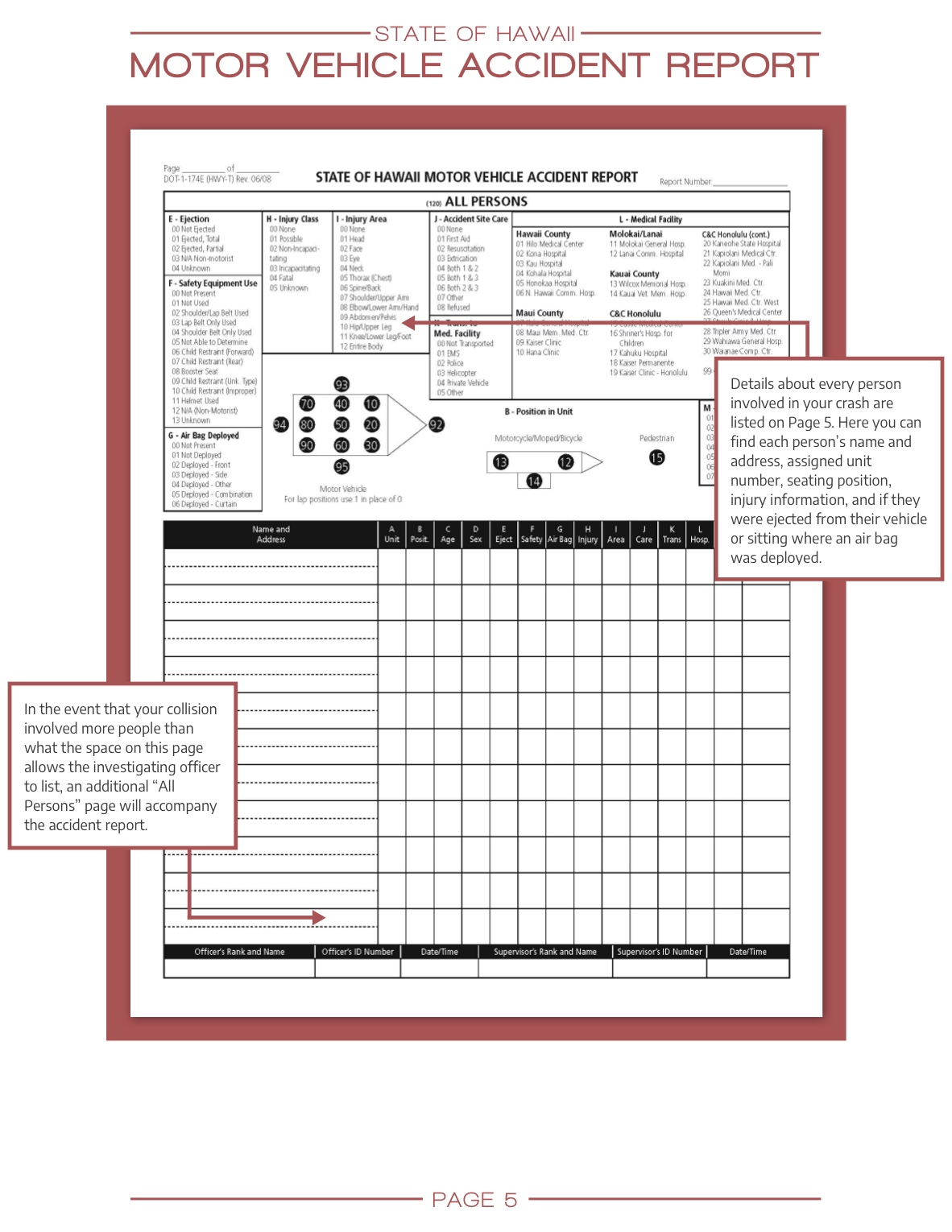
Page 5 (All Persons)
Details about every person involved in your crash are listed on Page 5. Here you can find each person’s name and address, assigned unit number, seating position, injury information, and if they were ejected from their vehicle or sitting where an air bag was deployed.
If your collision involved more people than what the space on this page allows the investigating officer to list, an additional “All Persons” page will accompany the accident report.
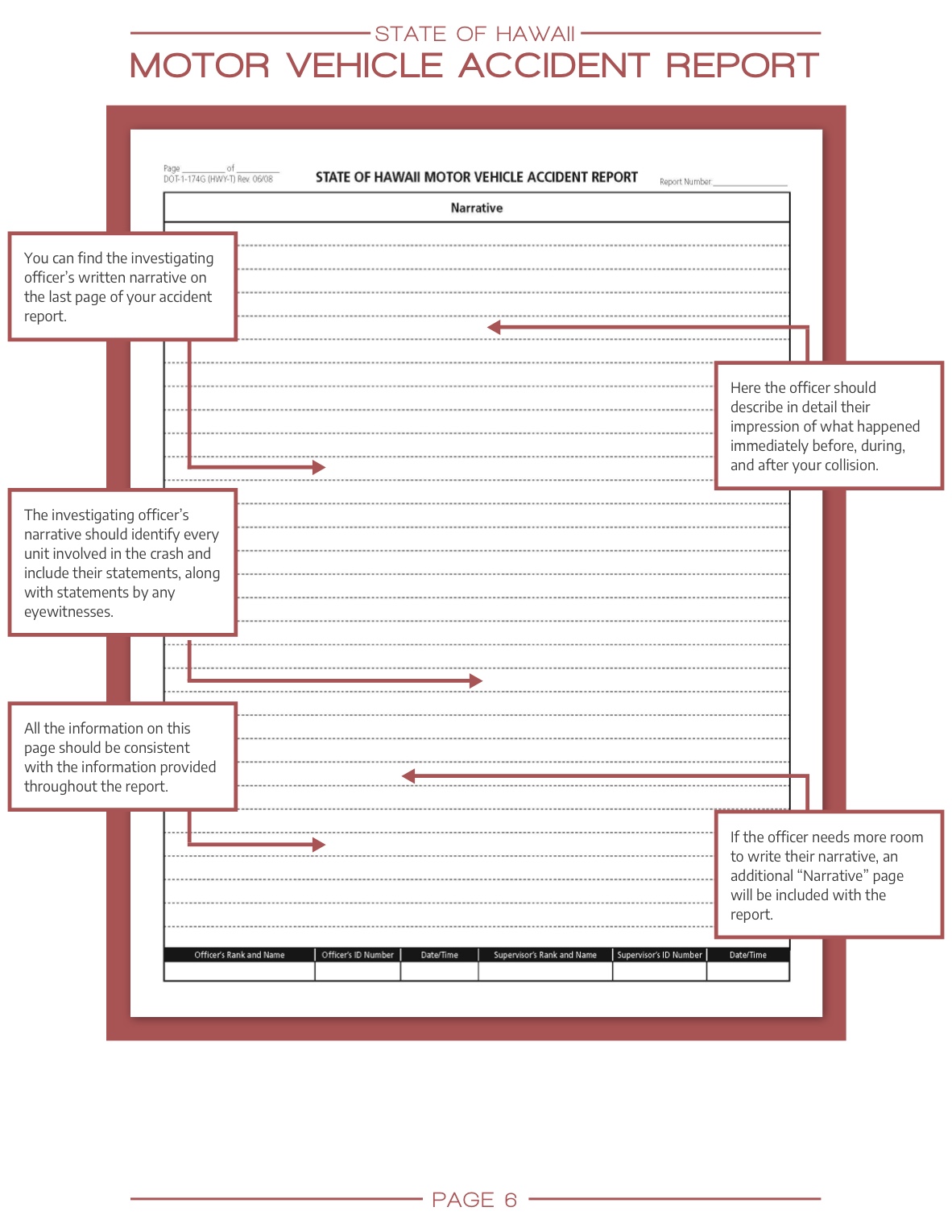
Page 6 (Narrative)
You can find the investigating officer’s written narrative on the last page of your accident report.
Here the officer should describe in detail their impression of what happened immediately before, during, and after your collision.
The investigating officer’s narrative should identify every unit involved in the crash and include their statements, along with statements by any eyewitnesses.
All the information on this page should be consistent with the information provided throughout the report.
If the officer needs more room to write their narrative, an additional “Narrative” page will be included with the report.
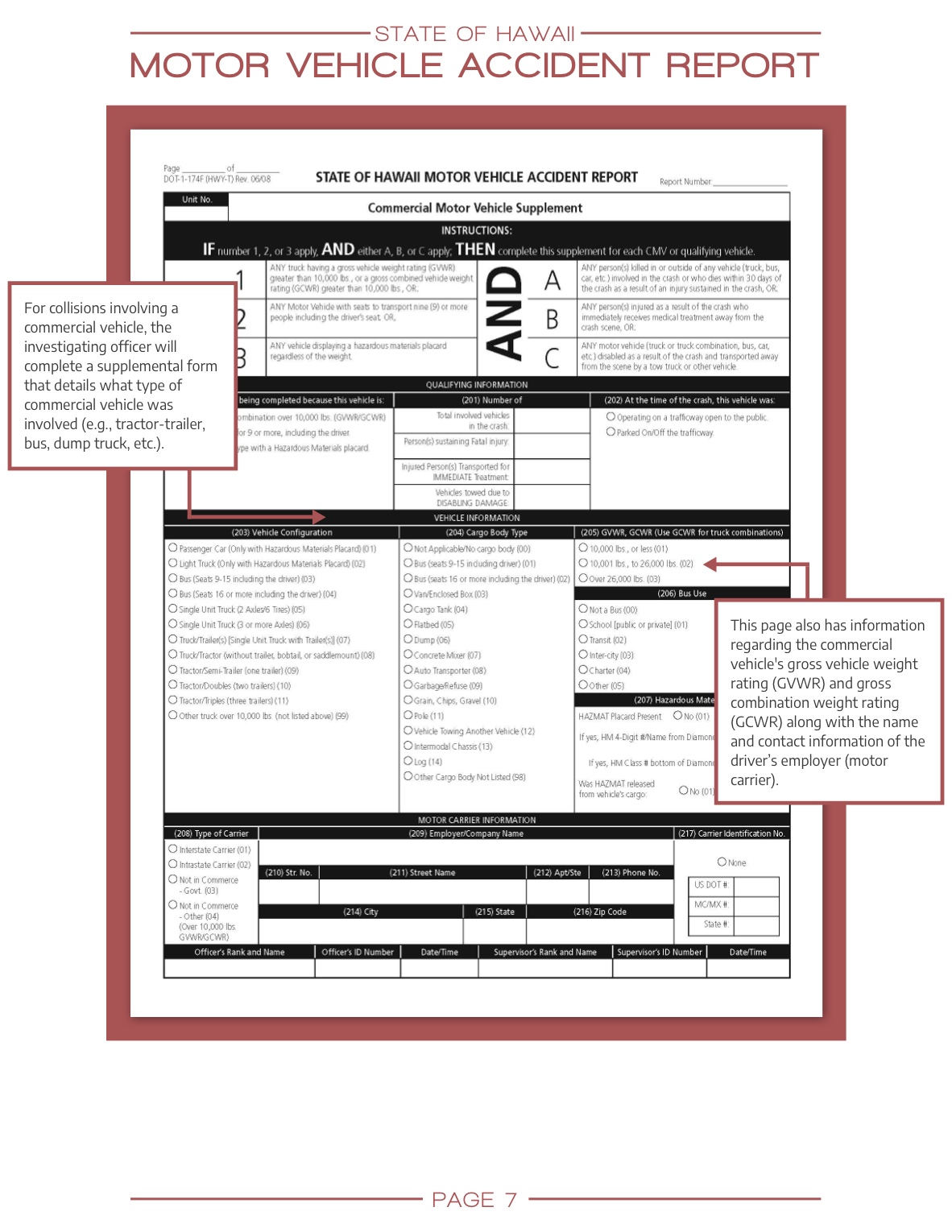
Commercial Motor Vehicle Supplement
For collisions involving a commercial vehicle, the investigating officer will complete a supplemental form that details what type of commercial vehicle was involved (e.g., tractor-trailer, bus, dump truck, etc.).
This page also has information regarding the commercial vehicle's gross vehicle weight rating (GVWR) and gross combination weight rating (GCWR) along with the name and contact information of the driver’s employer (motor carrier).





